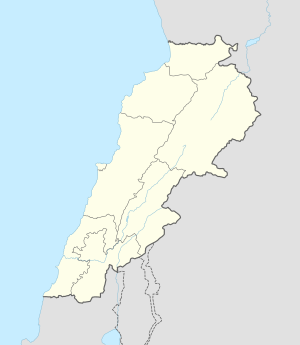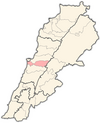
Chouf is a historic region of Lebanon, as well as an administrative district in the governorate (muhafazat) of Mount Lebanon.

Deir al-Qamar is a city south-east of Beirut in south-central Lebanon. It is located five kilometres outside of Beit ed-Dine in the Chouf District of the Mount Lebanon Governorate at 800 m of average altitude.

Christianity has a long and continuous history in Lebanon. Biblical scriptures show that Peter and Paul evangelized the Phoenicians, leading to the dawn of the ancient Patriarchate of Antioch. As such, Christianity in Lebanon is as old as Christian faith itself. Christianity spread slowly in Lebanon due to pagans who resisted conversion, but it ultimately spread throughout the country. Even after centuries of living under Muslim Empires, Christianity remains the dominant faith of the Mount Lebanon region and has substantial communities elsewhere.

Baabda District, sometimes spelled B'abda, is a district (qadaa) of Mount Lebanon Governorate, Lebanon, to the south and east of the Lebanon's capital Beirut. The region is also popularly known as "Southern Matn District", as distinct from Northern Matn District,. The capital of Baabda District is the city of Baabda.
Shiyyah or Chiyah is situated south of the Lebanese capital of Beirut and is part of Greater Beirut.

Keserwan District is a district (qadaa) in Keserwan-Jbeil Governorate, Lebanon, to the northeast of Lebanon's capital Beirut. The capital, Jounieh, is overwhelmingly Maronite Christian. The area is home to the Jabal Moussa Biosphere Reserve.
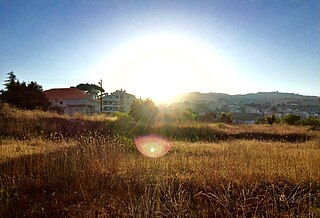
Mrouj is a municipality in the Matn District of the Mount Lebanon Governorate of Lebanon. The English translation of Mrouj is "The Meadows"
Bdadoun, is a town in Mount Lebanon which makes up one of the 70 towns and villages in the Lebanese district of Aley. It has an estimated population of 3,000. It is 499 meters above sea level and 15 kilometres from the capital Beirut. It is known as a summer holiday location.

Beit Mery is a Lebanese town overlooking the capital Beirut. The town has been a summer mountain resort since the times of the Phoenicians and later the Romans.
Ain Dara, is a village about 30 kilometres (19 mi) from Beirut, in the governorate of Mount Lebanon, in the Aley District. Ain Dara Municipality has an area of 2,586 hectares (9.98 sq mi), with a population of approximately 8000 persons. It had 3,874 registered voters in 2010. Originally a Druze village, Ain Dara today is a mixed Druze and Christian village, with a Christian majority, as per the recent registered voters.
MarMoussa is a town in Lebanon in the Matn District of Mount Lebanon Governorate. It is 25 km (16 mi) from Beirut at an altitude ranging between 900 and 1,150 metres above sea level.

Mansourieh, also known by various spellings, including: el-Mansourieh, Mansouriyeh, Mansouriyet el-Matn, and el-Mansouria is a town in the Matn District of the Mount Lebanon Governorate, in Lebanon. This place holds significant historical importance due to the presence of well-preserved archaeological remains, specifically a Roman aqueduct.
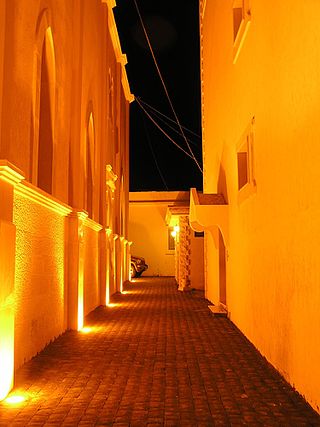
Miye ou Miye is a municipality in southern Lebanon located 5 km (3.2 mi) East of Sidon and 45 km (28 mi) south of the capital Beirut and it overlooks the Mediterranean Sea. The village lies at an average altitude of 156 m (512 ft) above sea level. Miye ou Miyes' surface stretches for 230 hectares. The village is bordered with a number of villages/towns: East: Qraiyeh, Ain El Delb; West: Sidon; North: Haret Saida; and South: Darb es Sim, Zaghdraiya.

Al Qoubaiyat, Koubeiyat, Kobayat or Qoubayat is the biggest Christian village in the Akkar Governorate, Lebanon. Its population is mostly composed of Maronites numbering around 12,000 persons according to the civil state registers. During summer time the area is highly populated but in winter time, many leave the mountains. The village's mountainous terrain and snowy winters harbour many leisure activities including hiking, camping, mountain biking, offroading and sightseeing. During the winter, many locals and tourists head towards its high snowy peaks for skiing.
Brih, Breeh is a village in the Chouf District in Mount Lebanon region, Lebanon. Brih is located 53 kilometres (33 mi) away from Beirut, the capital of Lebanon. It sits at an altitude of 800–1,100 metres (2,600–3,600 ft) above sea level and has an overall surface area of 305 hectares (1.18 sq mi).

The architecture of Lebanon embodies the historical, cultural and religious influences that have shaped Lebanon's built environment. It has been influenced by the Phoenicians, Romans, Byzantines, Umayyads, Crusaders, Mamluks, Ottomans and French. Additionally, Lebanon is home to many examples of modern and contemporary architecture. Architecturally notable structures in Lebanon include ancient thermae and temples, castles, churches, mosques, hotels, museums, government buildings, souks, residences and towers.

The Syro-Lebanese of Egypt, also known as Levantine-Egyptians or Syro-Egyptians, are an ethnic minority group in Egypt. They are Egyptians who have ancestry originating from the Levant, mostly what is now Syria and Lebanon, but also including those from Palestine. The majority of Egypt's historic Syro-Lebanese community is Christian, mainly Greek Orthodox and Eastern Catholic.
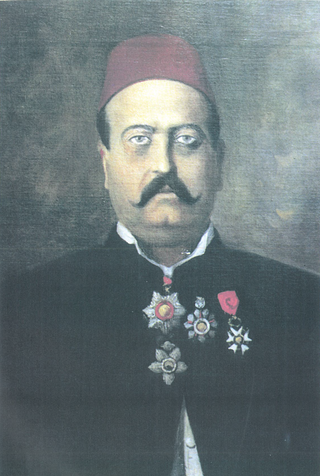
Saleem Takla was a Lebanese-Ottoman journalist who founded of Al-Ahram newspaper with his brother Beshara Takla.

